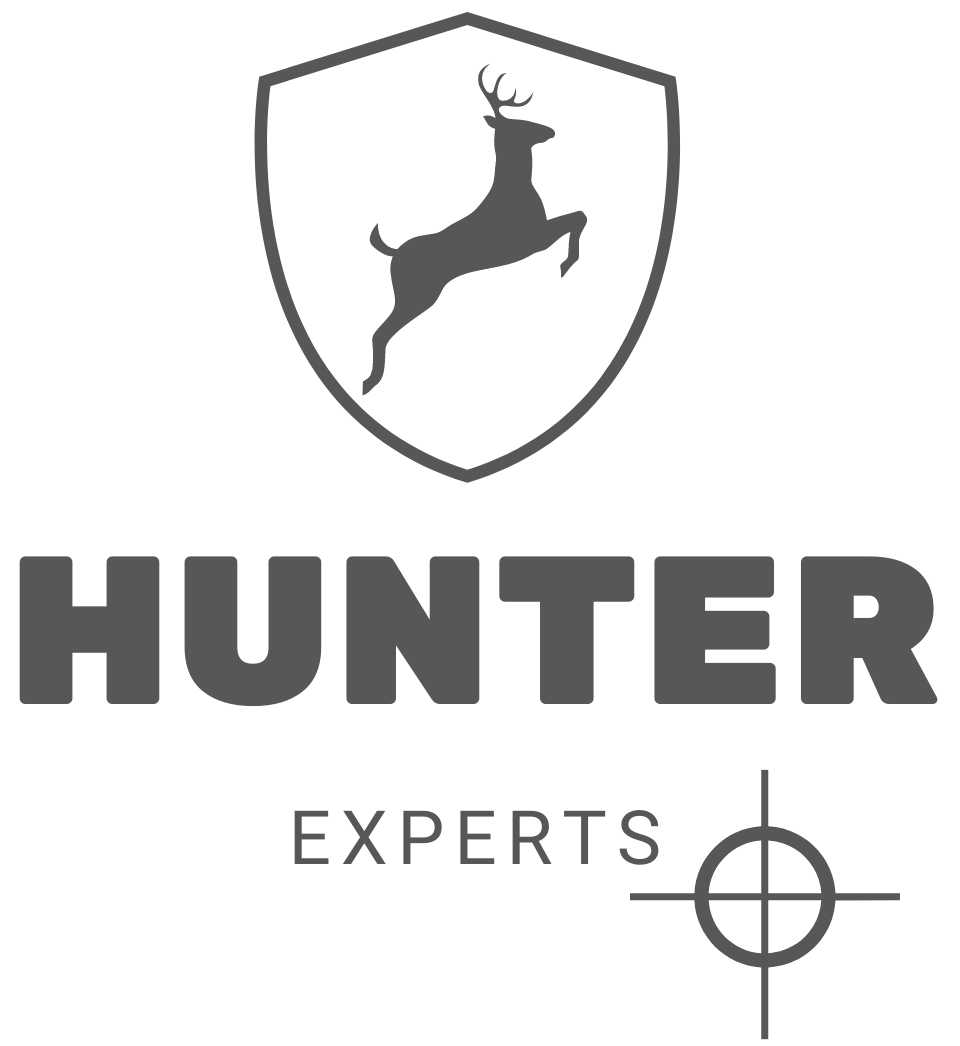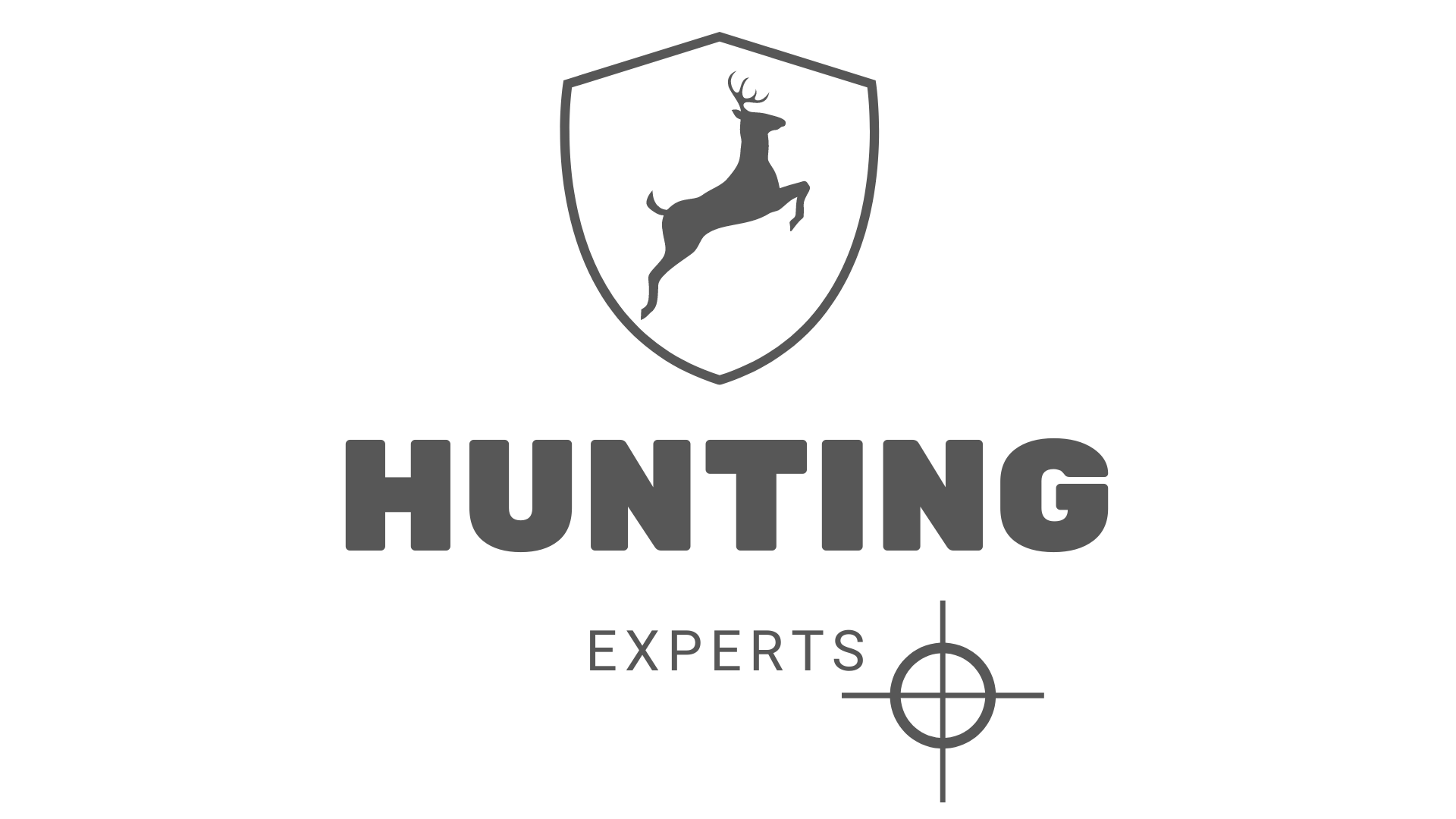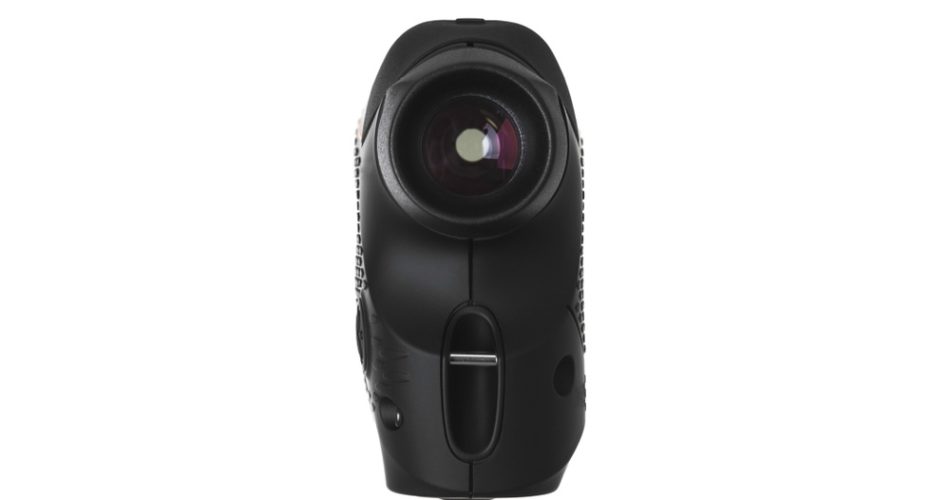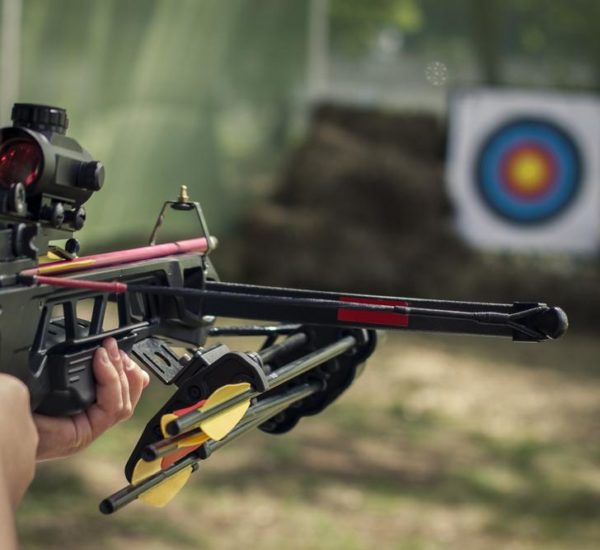Like I was, you’re probably a bowhunting enthusiast who is looking for a way to improve your bowhunting experience. You’ve also discovered that as important as honing your hunting skills is (stringing, shooting, etc.), getting the right gear like the best rangefinder for bowhunting is almost just as important.
As easy as it sounds, hunting for the best archery rangefinders can be quite tasking because of the current market saturation with endless products of different brands and models across all budget brackets.
In this article, I use the personal experience I gained while searching for a rangefinder to replace my current worn out one to review my picks for the top best rangefinders for bow hunting in 2025. I also include a detailed buyer’s guide section for folks who decide to conduct additional independent research.
Top 6 Best Rangefinders for Bow Hunting in 2025
1. TecTecTec ProWild Hunting
This item sits comfortably at the top of this list for reasons that may not be immediately apparent. But after the rigorous use of the TecTecTec ProWild Hunting Rangefinder, I can say without a doubt that this is one of the best rangefinders for bowhunting your money can buy.
Even though the maximum range is set at just 540 yards, I can’t fault it because it manages to stay accurate all through the said range. This is unlike a lot of other products with 1000+ yard range that starts to lose accuracy once they approach a little over the halfway mark.
Features like the through-the-lens viewscreen display are one of the easiest and most straightforward to interpret of all the rangefinders I’ve had to review. It also features an additional continuous scan feature, making surveying a terrain and locking on to a target easier. This item’s minimum sensitive range is about 4 yards, which means it can detect a target as close as 4-yards away!
The only downside I would say the TecTecTec rangefinder has is the lack of angle compensation feature, which isn’t much of a downside since you’re already getting such high value at such an affordable price.
Pros
- Easy to use
- Built like a tank
- Very portable
- Easy to read even in lowlight settings
- 540-yard range
Cons
- No angle compensation
- Battery life could be longer
Takeway
If you can deal with the lack of the angle compensation feature, I would say that it is nearly impossible to find a product with such high functionality at such a low price in 2025.
2. Sig Sauer SOK10001
This rangefinder is another gem that would make an excellent addition to your hunting arsenal, particularly for hunters who don’t like excessively complex items. With a maximum range of up to 1200 yards and an accuracy of 0.1 yards, the SIG Sauer Kilo range can quickly and accurately range and detect objects way over the halfway mark, unlike many similarly priced items.
This rangefinder possesses an accurate digital signal processing (DSP) engine capable of updating the range up to four times per second! That’s pretty impressive given the relatively budget-friendly price tag. Additional features like multiple target modes, waterproofing, and angle calculation further emphasize this little guy’s versatility, durability, and power.
Pros
- Long 1200 yard range
- Angle compensation
- DSP engine
- Extremely portable
Cons
- View screen may be difficult to see in low light settings
- Low magnification
Takeway
The Sig Sauer kilo 1000 rangefinder would be more than adequate for most of your hunting needs, and it would have easily placed higher on this list if not for its difficulty to read in low light situations.
3. Wosports Hunting Range Finder
I want to state first that the thing I like the most about the Wosports brands of rangefinders is the ability to compress a fair number of features in such an affordable, small, and sturdy case.
This Wosports 07 hunting rangefinder may, at first glance, seem not so great, but I guess the saying “do not judge a book by its cover” applies to rangefinders too. The wosports has a water-resistant, compact, and sturdy exterior that makes it fit snugly into the palm of your hand, enhancing comfort.
It has a large eyepiece and can detect and lock on to targets as far as 750 yards. The magnification of 6X is an excellent addition since it falls entirely within my recommended bow hunting magnification range. It has a speed detection feature, which can be helpful on some occasion.
With that being said, I hoped this item had some angle compensation feature and at least a way to select between the back and front target. It could also have used an easier to read display.
Pros
- Perfect 6X magnification
- Compact, portable design
- Water-resistant and durable
Cons
- No target selection feature
- The display may be hard to read
- No angle compensation of any kind
Takeway
The Wosports 07 is a perfect fit for bowhunters who like to keep it simple with compact but durable gear. You would have to get past the lack of any form of angle compensation.
4. Nikon 8252 ACULON A211
The Nikon Aculon rangefinder is one of the items I’ve personally had the chance to use on this list. And my first use, I would say I was hooked on this and the many other unique products from the vortex. The fact that it found its way here amongst all the other great Nikon products should say a lot.
It has a maximum range of up to 550 yards within which targets can be detected and locked on to within considerable accuracy even though said accuracy tends to drop the farther you move away from the 100-yard mark.
The magnification of the Aculon is about 10X – 22X, which is pretty high for bow hunting, but it would more than suffice. The high magnification also makes it suitable for ranging during rifle hunting or golfing. The sturdy construction, water-resistance, and built-in angle compensation feature make the Aculon even more desirable.
Pros
- Easy to use
- Power saving feature
- Angle compensation
- Single-button operation
- Multi-coated optics
Cons
- Reduced sensitivity after the 100-yard mark
Takeway
The Nikon Aculon perfectly combines looks and function.
5. Bushnell Laser Rangefinder
First, I would like to say that this product is accurately named because of its extremely high efficiency at improving your overall hunting experience and outcome. It has an aesthetically pleasing and durable camouflaged exterior with a feature-packed interior that makes it useful as a recurve or compound bow rangefinder.
It has a range of between 10 – 600 yards, sufficient for both short- and long-range targets. I also liked the fact that unlike many products (even some on this list), the bone collector had a bright viewscreen that made it easy to read even in low light conditions.
Personally, because of how much I love the name and viewscreen of this rangefinder, I would’ve loved to own one if I didn’t already own the TecTecTec Prowild. I just thought the maximum range (600 yards) could be longer and the minimum range (10 yards) shorter.
Pros
- Bright LCD viewscreen
- Easy to use
- Durable, compact casing
- Waterproof
Cons
- No angle compensation
- Short maximum range
- Far minimum range
Takeway
Bushnell already had a reputation for manufacturing high quality and durable products, and the bone collector is no exception. Its bright LCD screen makes it even nicer to have one around.
6. BIJIA Hunting Rangefinder
The BIJIA 650 yard hunting rangefinder rounds up an already existing list. It obviously cannot offer you the same functionality as the higher end, more expensive, and higher placed items on this list. But for the price tag, this is a pretty good bargain.
The BIJIA rangefinder shows that it shouldn’t be underestimated with its continuous scan features, angle calculation, and target speed measurement.
I would more than love to say that the 650-yard maximum range is insufficient, but for the price and level of accuracy within this range, I would say it more than suffices. However, where it fell short was with its difficult to read viewscreen in lowlight conditions and its lack of back-target priority.
Pros
- High value for money
- Continuous scan
- Target speed detection
Cons
- The plastic exterior can be slippery
- No back-target priority
- Poor low light visibility
- Low maximum range
Takeway
The BIJIA hunting rangefinder found its way onto this list against all odds. And with the price tag and features, it is easy to look past its shortcomings.
What to Consider Before Buying? – A Buyer’s Guide
After giving my recommendations for the best rangefinders for bow hunting, a buyer’s guide is definitely in order. This buyer’s guide is tailored for individuals intending to carry out their research and decide what their own best rangefinder is.
The buyer’s guide shows the criteria my recommended products had to pass through before they found their way to this list. I didn’t try out all the products on the list above. Based on online professional reviews, a little personal experience, and additional research, I compiled the list and formulated an ironclad buyer’s guide.
You probably think that any product that passed all the criteria had to be super expensive. But the good news is I found that across all budget brackets, there were pretty cool products that passed these pre-purchase considerations, from the costly selections to relatively cheap range finders for bow hunting.
*Note* I try my best to explain any complex technical terminology as simple as possible.
The following factors should be considered in your search for the best archery rangefinder:
Range
Most importantly, the maximum “range” of a rangefinder is one of the parameters to look out for when on the market for one. It is defined as the maximum distance within which the rangefinder can effectively track a target. It can be measured in meters or yards and based on the range, and these devices can be classed as long-range or short-range.
A long-range rangefinder is an ideal option for bowhunting, but for smaller game/targets, a short-range rangefinder would work just fine. Take note that the term “short-range” does not mean very short distance but refers to devices with a lesser range than the way longer-ranged devices.
This may seem quite confusing but keep this in mind as a general rule: a rangefinder doesn’t work very effectively at its maximum distance. So, you should select a rangefinder with a maximum range of about double the range you need.
Angle Compensation
Until a couple of decades, this parameter was seen as an additional feature in the more high-end devices. But recently, this has become an invaluable feature found in most rangefinders for bow hunting. Its definition and relevance can be quite confusing to the amateur, but I’m going to try to break it down as best I can.
When shooting from a distance, you have to consider a couple of factors, including the distance, angle, and the drop-off of the shot due to the effects of gravity. This is particularly important when shooting from an inclined or declined surface.
The longer the distance and/or angle between you and the target, the harder it becomes to adjust the angle of your aim for those factors manually. In these scenarios, you would be thankful you spent the additional few bucks on a rangefinder with the angle compensation feature.
Having gone through a couple of rangefinders across different budgets, I noticed that as a general rule, the more money you’re willing to spend on an angle compensating unit, the more accurate it would be at compensating angles when shooting uphill, downhill, or from trees.
Magnification
This parameter is usually expressed as “6X” or “7X” and so on, with the smaller numbers indicating a smaller magnification and the larger numbers, a larger one. The magnification of a rangefinder determines its accuracy at spotting distant prey, and the higher the magnification, the more effectively your rangefinder can locate and focus on long-distance prey.
However, since our prey as bow hunters isn’t far away, excessive zoom may become counterproductive since you waste valuable seconds trying to focus on a short-ranged prey. So, to strike a balance of quality and price, a magnification of 5X or 6X should be sufficiently adequate to let you focus on your target without losing orientation.
Close target sensitivity
Your rangefinder’s sensitivity when looking at a target close to your current location is significant, particularly in bowhunting. This is because bow hunting generally does not have as high hunter-target distance as rifle hunting does.
So, it would help if you were on the lookout for a range finder for crossbow hunting that can lock onto a target within relatively short distances (as short as 10 yards!). Also, it would be helpful if the device is capable of giving the range in fractions of a yard.
Far target specificity/priority
The “target priority” feature determines how your rangefinder decides what to focus on when multiple targets are on the view screen. Far target priority tells the rangefinder to focus on the farthest target in a series of distant readings.
For instance, when targeting a deer behind a screen of leaves, you want your rangefinder to focus on the deer and not a bunch of leaves. A rangefinder with the far target features also aids focusing when hunting in low visibility environs like in rain or mist.
Water resistance
Under the previous subheading, I inferred that bow hunting under the rain is not only possible but can be quite fun and rewarding. So, during those times of the year where it’s moderately rainy, you need a waterproof or at least water-resistant rangefinder to prevent the device’s sensitive electronic components from shorting out. Thick dew and accidental falls into puddles, or larger water bodies are also factors that further justify this feature’s need.
Durability
Your rangefinder’s build quality is a special consideration for rangefinders used in bow hunting, more so than for golfing or other purposes. When you’re out in the range, there are numerous potentials for physical trauma to the unit’s body.
So, you should pick out a device that can take a licking and keep on kicking. You can do this by picking out a reasonably priced product from a highly reputable brand. Apart from the lifespan found on the device’s manual, reading personal and professional user reviews on a particular product can give you an idea about how long the unit would last under real hunting conditions.
Viewscreen
The viewscreen is seen as one of the most essential features of a rangefinder because there is no point in purchasing a very accurate and long-range device that doesn’t let you easily read the information presented to you, even in low light situations.
Also, the larger the distance between your eye and the viewscreen (eye relief, measured in millimeters), the wider your view, and hence, the easier it would be to make readings on the rangefinder.
Additional features
Features such as fog or mist compensation and speed detection can significantly improve your hunting experience, even though they’re not the most paramount factors to consider.
Also, the presence of multi-coatings on the optics system would reduce glare and reflections. This may help to enhance the overall efficiency of light transmission through the system, which would provide a much clearer view, improving your ability to analyze distance and aim.
FAQs
What is the best bow rangefinder for hunting?
The TecTecTec prowild hunting rangefinder found a way to balance all the criteria in the buyer’s guide section and still have a very affordable price tag. However, I wouldn’t say it’s the best because it’s more like “my” best.
Can I find a good cheap rangefinder?
Depending on your budget, what I consider expensive may be seen as cheap to you. So, I would say yes, you can find an excellent cheap rangefinder. For instance, the Nikon COOLSHOT 20 Gil is a pretty great rangefinder with great range and battery life. It is available for a steal in physical and online stores.
What should I look for in a rangefinder for bowhunting?
A good bowhunting rangefinder should have a long maximum range, angle compensating capabilities, 5X-6X magnification, considerable close target sensitivity, and far target specificity. It should also be durable, affordable, and possess a few additional features like a multi-coated optical system, speed detection, and fog/mist compensation.
Is angle compensation necessary?
This depends on the layout of your hunting range. If you hunt from a tree stand or an uphill/downhill standpoint and/or you shoot from a relatively long distance, a rangefinder with angle compensation can be an invaluable addition to your hunting collection. Even if you don’t regularly hunt in these situations, having an angle compensating rangefinder is not the worst idea because you never know where your quest for adventure may take you.
How important is a rangefinder?
Bowhunters need a rangefinder to accurately estimate target distances over 20 yards and up to about 70 – 100 yards. A simple, reasonably-priced rangefinder that can quickly range a target up to 500 yards out is all we bowhunters need, especially on flat terrain.
Conclusion
By now, you’ve already realized that purchasing the best rangefinders for bow hunting that fits within your budget bracket would make an invaluable addition to your hunting arsenal.
So, please take all the time you need to create a reasonable budget and then look for the best rangefinder for bow hunting that sits comfortably in all of the criteria I stated in the buyer’s guide section.











